The fields of infection biology, immunobiology and inflammation research is varied and ever-expanding. Researchers the world over are making discoveries that contribute greatly to our collective understanding of health and disease. VI4 is committed to providing our members, students, and community resources to aid in knowledge-building in these core VI4 research areas. Please check out our current curated recommended reading list below from scientists across the country.
Recommended Reading - April 5th, 2020
VI4 Curation Team
- Cryo-EM structure of the 2019-nCoV spike in the prefusion conformation. Wrapp D, et al. in Science, March 13, 2020
- MAIT cells are imprinted by the microbiota in early life and promote tissue repair. Constantinides, M, et al. in Science, October 25, 2019
- Optogenetic manipulation of calcium signals in single T cells in vivo. Bohineust A, et al. in Nature, March 2, 2020
- Live-animal imaging of native haematopoietic stem and progenitor cells. Christodoulou C, et al. in Nature, February 5, 2020
- Targeting of temperate phages drives loss of type I CRISPR–Cas systems. Rollie C, et al. in Nature, January 22, 2020
- Combinatorial selection in amoebal hosts drives the evolution of the human pathogen Legionella pneumophila. Park J, et al. in Nature, January 27, 2020
- Glutamine blockade induces divergent metabolic programs to overcome tumor immune evasion. Leone R, et al. in Science, Novemeber 22, 2019
- Febrile Temperature Critically Controls the Differentiation and Pathogenicity of T Helper 17 Cells. Wang X, et al. in Immunity, February 11, 2020
- Enhanced immunogenicity of mitochondrial-localized proteins in cancer cells. Prota G, et al. in Cancer Immunology Research, March 12, 2020
- Propionic Acid Shapes the Multiple Sclerosis Disease Course by an Immunomodulatory Mechanism. Duscha A, et al. in ScienceDirect, March 19, 2020
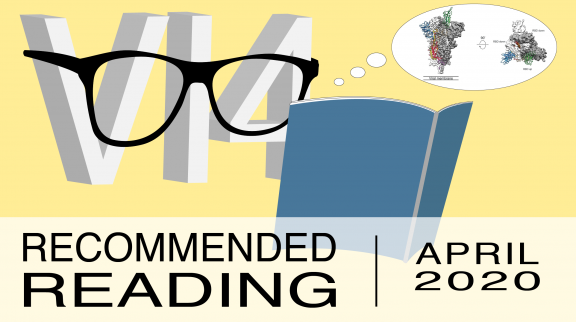
Recommended Reading - March 8th, 2020
VI4 Curation Team
- FPR1 is the plague receptor on host immune cells. Osei-Owusu P, et al. in Nature, September 18, 2019
- Structure elucidation of colibactin and its DNA cross-links. Xue M, et al. in Science, September 6, 2019
- Ketogenic diet activates protective γδ T cell responses against influenza virus infection. Goldberg EL, et al. in Science, November 11, 2019
- Staphylococcus aureus toxin suppresses antigen-specific T cell responses. Lee B, et al. in The Journal of Clinical Investigation, December 24, 2019
- Peripheral T cell expansion predicts tumour infiltration and clinical response. Wu TD, et al. in Nature, February 26, 2020
Bonus Recs!
- Peritoneal GATA6+ macrophages function as a portal for Staphylococcus aureus dissemination. Jorch S, et al. in The Journal of Clinical Investigation, September 23, 2019
- Microbial metabolites control the thymic development of mucosal-associated invariant T cells. Legoux F, et al. in Science, October 10, 2019
- A metagenomic strategy for harnessing the chemical repertoire of the human microbiome. Sugimoto Y, et al. in Science, December 13, 2019
- Simulation modelling for immunologists. Handel A, et al. in Nature, December 5, 2019
- Improved protein structure prediction using potentials from deep learning. Senior A W, et al. in Nature, January 15, 2020

Recommended Reading - February 9th, 2020
VI4 Curation Team
- Dietary Intake Regulates the Circulation Inflammatory monocyte Pool. Jordan S, et al. in Cell, August 22, 2019
- Bacteriophage targeting of gut bacterium attenuates alcoholic liver disease. Duan Y, et al. in Nature, November 13, 2019
- Metabolic regulation of gene expression by histone lactylation. Zhang D, et al. in Nature, October 23, 2019
- Cyclophilin A protects HIV-1 from restriction by human TRIM5a. Kim K, et al. in Nature Microbiology, December 4, 2019
- Correlative three-dimensional super-resolution and block-face electron microscopy of whole vitreously frozen cells. Hoffman D, et al. in Science, January 17, 2020
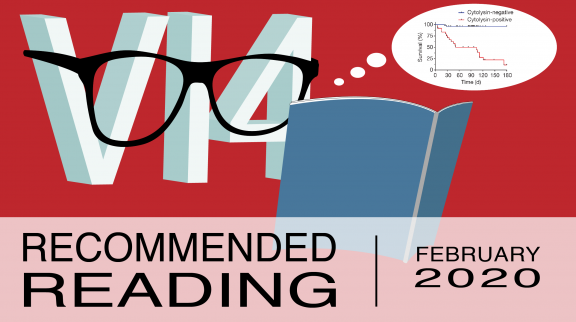
Recommended Reading - January 12th, 2020
VI4 Curation Team
- Microbiota-derived lantibiotic restores resistance against vancomycin-resistant Enterococcus. Kim S, et al. in Nature, August 21, 2019
- Primary prostate cancer educates bone stroma through exosomal pyruvate kinase M2 to promote bone metastasis. Dai J, et al. in Journal of Experimental Medicine, September 23, 2019
- Stellate Cells, Hepatocytes, and Endothelial Cells Imprint the Kupffer Cell Identity on Monocytes Colonizing the Liver Macrophage Niche. Lewin G, et al. in Cell Press, September 24, 2019
- Neuropeptide CGRP Limits Group 2 Innate Lymphoid Cell Responses and Constrains Type 2 Inflammation. Nagashima H, et al. in Science Direct, October 15, 2019
- Mimicking the human environment in mice reveals that inhibiting biotin biosynthesis is effective against antibiotic-resistant pathogens. Carfrae L, et al. in Nature, October 28, 2019
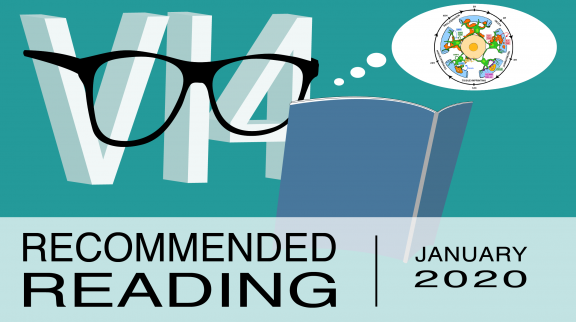
Recommended Reading - December 8th, 2019
VI4 Curation Team
- Long-Distance Cooperative and Antagonistic RNA Polymerase Dynamics via DNA Supercoiling. Sangjin Kim, et al. in Cell Press, September 19, 2019
- TGFβ blocks IFNα/β release and tumor rejection in spontaneous mammary tumors. Guerin M, et al. in Nature, September 11, 2019
- Large-scale identification of pathogen essential genes during coinfection with sympatric and allopatric microbes. Lewin G, et al. in PNAS, September 24, 2019
- Bulk tissue cell type deconvolution with multi-subject single-cell expression reference. Wang X, et al. in Nature, January 22, 2019
- Migratory DCs activate TGF-β to precondition naïve CD8+ T cells for tissue-resident memory fate. Mani V, et al. in Science, October 11, 2019

Recommended Reading - November 3rd, 2019
VI4 Curation Team
- Suppression of Exosomal PD-L1 Induces Systemic Anti-tumor Immunity and Memory. Blelloch R, Poggio M, et al. in Cell Reports, April 4, 2019
- Viral complementation of immunodeficiency confers protection against enteric pathogens via interferon-λ. Baldridge MT, Ingle H, et al. in Nature, April 1, 2019
- Sustained Type I interferon signaling as a mechanism of resistance to PD-1 blockade. Jacquelot N, et al. in Nature, September 3, 2019
- Stochastic Variation in Expression of the Tricarboxylic Acid Cycle Produces Persister Cells. Zalis E, et al. in American Society for Microbiology, September 17, 2019
- The evolution of antibiotic resistance: Clinically relevant evolution studies are needed to help fight the spread of antibiotic resistance. Rekdal V, et al in Science, September 13, 2019
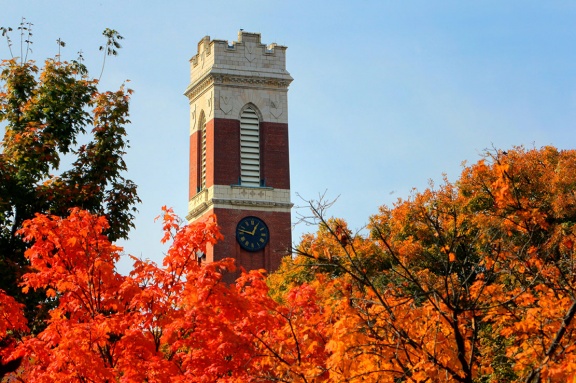
Kirkland Hall in the Fall
(Vanderbilt University)
(Vanderbilt University)
Recommended Reading - October 13th, 2019
VI4 Curation Team
- Immune induction strategies in metastatic triple-negative breast cancer to enhance the sensitivity to PD-1 blockade: the TONIC trial. Voorwerk L, et al in Nature, May 13, 2019
- Human Influenza A Virus Hemagglutinin Glycan Evolution Follows a Temporal Pattern to a Glycan Limit. Yewdell JW, Altman MO, et al in American Society for Microbiology, April 1, 2019
- Microbial Exposure Enhances Immunity to Pathogens Recognized by TLR2 but Increases Susceptibility to Cytokine Storm through TLR4 Sensitization. Huggins M, et al in Cell Reports, August 13, 2019
- Altered immunity of laboratory mice in the natural environment is associated with fungal colonization. Yeung F, et al in bioRxiv, August 21, 2019
- Discovery and inhibition of an interspecies gut bacterial pathway for Levodopa metabolism. Rekdal V, et al in Science, June 14, 2019
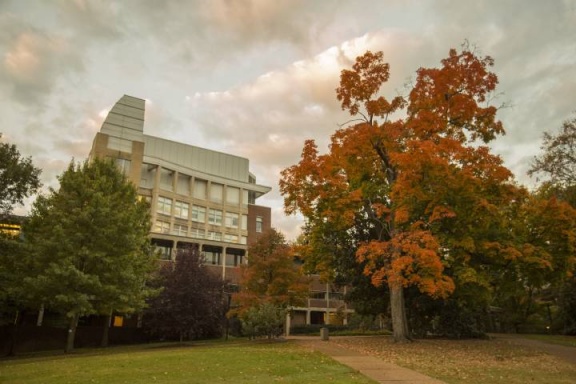
Fall on Campus
Stevenson Center
(Daniel Dubois / Vanderbilt University)
Stevenson Center
(Daniel Dubois / Vanderbilt University)
Recommended Reading - September 11th, 2019
VI4 Curation Team
- Plants send small RNAs in extracellular vesicles to fungal pathogen to silence virulence genes. Cai Q, Jin H, et al in Science, June 8, 2018
- Dysfunctional CD8 T Cells Form a Proliferative, Dynamically Regulated Compartment within Human Melanoma. Amit I, Li H, et al in Cell Press, February 7, 2019
- Innate lymphoid cells support regulatory T cells in the intestine through interleukin-2. Sonnenberg GF, Zhou L, et al in Nature, April 3, 2019
- A c-di-GMP-Based Switch Controls Local Heterogeneity of Extracellular Matrix Synthesis which Is Crucial for Integrity and Morphogenesis of Escherichia coli Macrocolony Biofilms. Hengge R, Serra D in Journal of Molecular Biology, April 4, 2019
- TCR Transgenic Mice Reveal Stepwise, Multi-site Acquisition of the Distinctive Fat-Treg Phenotype. Li C, Mathis D, et all in Cell Press, June 7, 2018
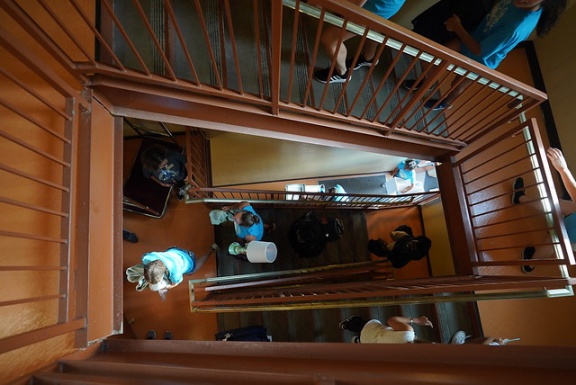
Vanderbilt University Freshmen Move-In
August 17, 2019
August 17, 2019
Recommended Reading - June 7th, 2019
VI4 Curation Team
- In Vivo Structures of the Helicobacter pylori cag Type IV Secretion System. Chang YW, Jensen G, et al in Cell Reports, April 17, 2019
- p53 inhibits CRISPR–Cas9 engineering in human pluripotent stem cells. Ihry R, Kaykas A, et al in Nature Medicine, June 11, 2018
- Vesicle-Cloaked Virus Clusters Are Optimal Units for Inter-organismal Viral Transmission. Santiana M, Altan-Bonnet N, et al in Cell Host & Microbe, August 8, 2018
- Unique Patterns and Biogeochemical Relevance of Two-Component Sensing in Marine Bacteria. Held NA, Saito MA, et al in M Systems - ASM, February 5, 2019
- Neutrophils: New insights and open questions. Ley K, Catz SD, et al in Science Immunology, December 7, 2018
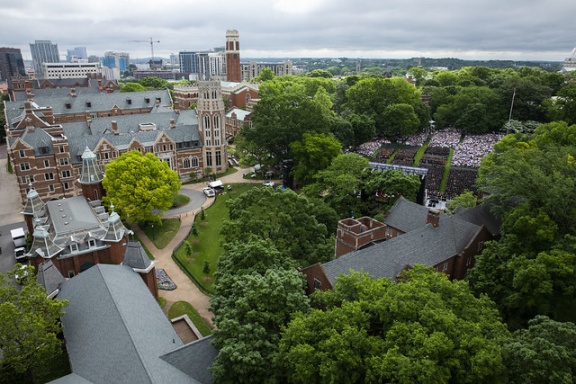
Commencement 2019
Main Ceremony
-Medical School Diploma Ceremony
Alumni Lawn
Vanderbilt University
Photo: Anne Rayner; VU
Main Ceremony
-Medical School Diploma Ceremony
Alumni Lawn
Vanderbilt University
Photo: Anne Rayner; VU
Recommended Reading - May 10th, 2019
VI4 Curation Team
- Translocation of a gut pathobiont drives autoimmunity in mice and humans. Vieira SM, Goodman AL, Kriegel MA, et al in Science, March 9, 2018
- Structure of the peptidoglycan polymerase RodA resolved by evolutionary coupling analysis. Sjodt M, Rudner DZ, Kruse AC, et al in Nature, April 5, 2018
- Spatial determinants of quorum signaling in a Pseudomonas aeruginosa infection model. Darch S, Shear JB, Whiteley M, et al in PNAS, April 17, 2018
- Bacterial sensors define intracellular free energies for correct enzyme metalation. Osman D, Chivers PT, Robinson NJ, et al in Nature: Chemical Biology, January 28, 2019
- Spatially distinct tumor immune microenvironments stratify triple-negative breast cancers. Gruosso T, Haibe-Kains B, Park M, et al in The Journal of Clinical Investigation, February 12, 2019
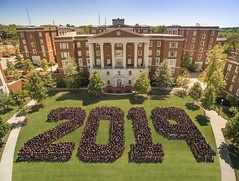
Vanderbilt University
Class of 2019
See more from #VU2019 at www.rebelmouse.com/vanderbiltu/VU2019/
Class of 2019
See more from #VU2019 at www.rebelmouse.com/vanderbiltu/VU2019/
Tags